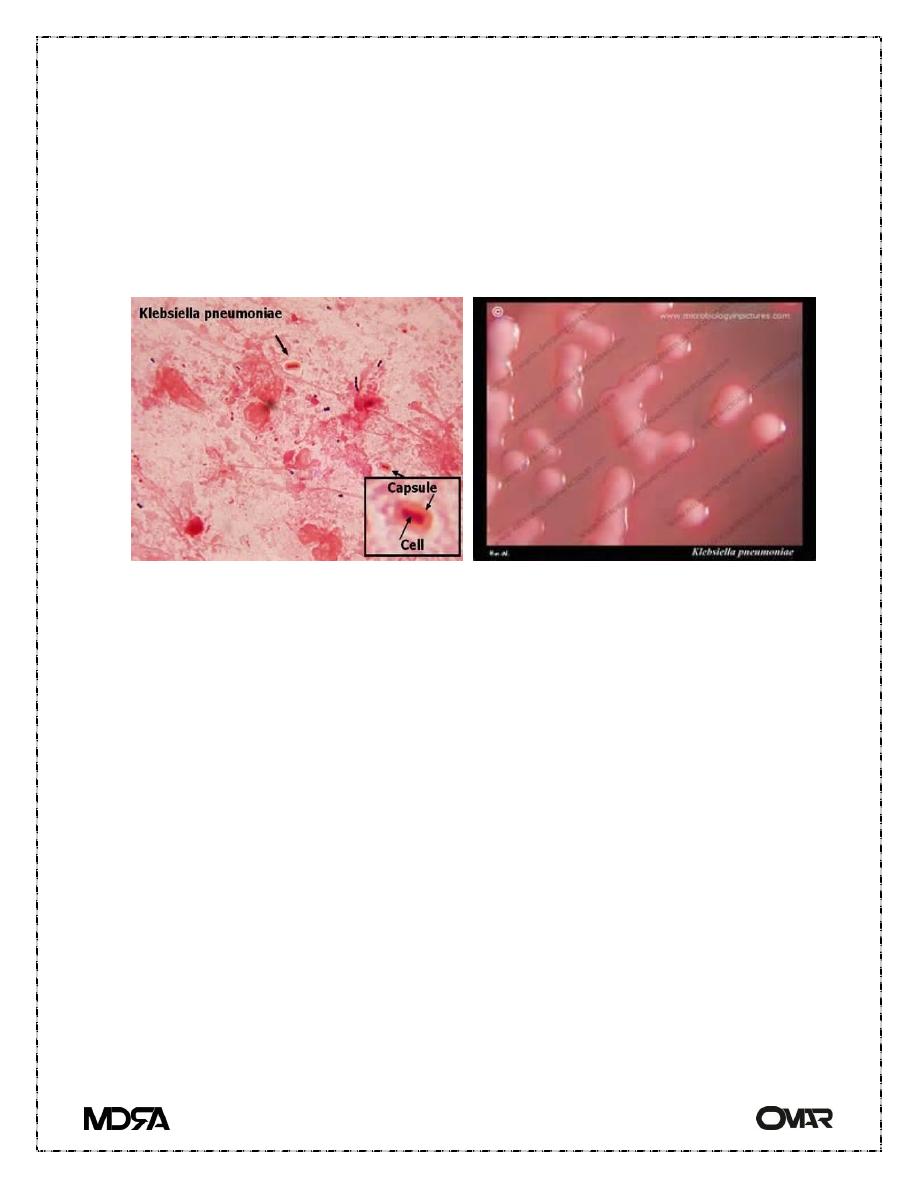
1
Klebsiella
• Klebsiella is a genus of non-motile, Gram-negative, oxidase-
negative, rod-shaped bacteria with a prominent polysaccharide-
based capsule. Klebsiella species are found everywhere in
nature. This is thought to be due to distinct sublineages
developing specific adaptations, with associated biochemical
adaptations which make them better suited to a particular
environment. They can be found in water, soil, plants, insects,
animals and humans.
Species
• K. granulomatis
• K. oxytoca
• K. pneumoniae
• K. terrigena
• K. planticola
Features
• Klebsiella bacteria tend to be rounder and thicker than other
members of the Enterobacteriaceae family. They typically occur
as straight rods with rounded or slightly pointed ends. They can
be found singly, in pairs or in short chains. Diplobacillary forms
are commonly found in vivo.

2
• They have no specific growth requirements and grow well on
standard laboratory media, but grow best between 35 and 37
°C and at pH 7.2. The species are facultative anaerobes, and
most strains can survive with citrate and glucose as their sole
carbon sources and ammonia as their sole nitrogen source.
